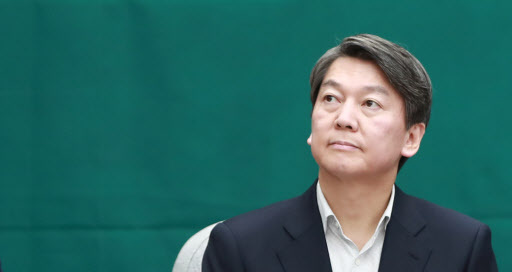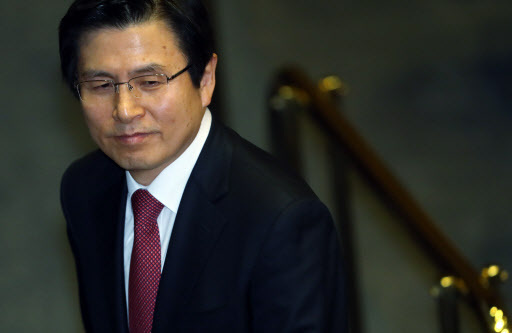With former UN Secretary-General Ban Ki-moon bowing out of the race, the dynamics of South Korea’s presidential contest appear to have shifted further to the left.
Yet there are three key variables that may drastically change the race and its outcome. The Korea Herald explains what and whom to look out for in this year’s presidential election.
1. Things you need to know about the election
Conservatives have been in power for the past decade in South Korea, through presidents Lee Myung-bak and Park Geun-hye. But recent polls point to a clear desire from the electorate for a regime change after a humiliating political scandal that led to President Park’s parliamentary impeachment.
The fate of the conservative incumbent, suspended from office and standing an impeachment trial, is a key variable in this year’s presidential election.
If her ouster is confirmed by the court, the nation will elect a new president within 60 days.
If Park survives and is allowed to serve out her term, the election will take place on Dec. 20, as scheduled.
Either way, the next leader will have a full five-year term.
2. The key may be in the timing
Should an early election be necessitated by Park’s early departure, the nation has only two months to find the next person to take its highest office.
This time constraint will put lesser-known candidates at a relative disadvantage. Not only is there little time for an underdog to pull off an upset against a longtime favorite, there is insufficient time for a thorough examination of a candidate’s credentials and policies.
This is why Moon Jae-in, who carried the liberal opposition’s flag in the previous election to a 48-52 defeat to President Park, is trying to paint himself as the most prepared candidate.
3. Dark horses to watch
As of Feb. 5, a total of 10 politicians have declared themselves as candidates for the nation’s presidency. More are expected to officially announce their bids in the coming weeks, including the frontrunner Moon.
Based on recent trends in polls and the current partisan dynamics, The Korea Herald has picked three to watch out for.
An Hee-jung
Yet there are three key variables that may drastically change the race and its outcome. The Korea Herald explains what and whom to look out for in this year’s presidential election.
1. Things you need to know about the election
Conservatives have been in power for the past decade in South Korea, through presidents Lee Myung-bak and Park Geun-hye. But recent polls point to a clear desire from the electorate for a regime change after a humiliating political scandal that led to President Park’s parliamentary impeachment.
The fate of the conservative incumbent, suspended from office and standing an impeachment trial, is a key variable in this year’s presidential election.
If her ouster is confirmed by the court, the nation will elect a new president within 60 days.
If Park survives and is allowed to serve out her term, the election will take place on Dec. 20, as scheduled.
Either way, the next leader will have a full five-year term.
2. The key may be in the timing
Should an early election be necessitated by Park’s early departure, the nation has only two months to find the next person to take its highest office.
This time constraint will put lesser-known candidates at a relative disadvantage. Not only is there little time for an underdog to pull off an upset against a longtime favorite, there is insufficient time for a thorough examination of a candidate’s credentials and policies.
This is why Moon Jae-in, who carried the liberal opposition’s flag in the previous election to a 48-52 defeat to President Park, is trying to paint himself as the most prepared candidate.
3. Dark horses to watch
As of Feb. 5, a total of 10 politicians have declared themselves as candidates for the nation’s presidency. More are expected to officially announce their bids in the coming weeks, including the frontrunner Moon.
Based on recent trends in polls and the current partisan dynamics, The Korea Herald has picked three to watch out for.
An Hee-jung

In the liberal Democratic Party of Korea’s primary, Moon is a formidable but not unstoppable leader. South Gyeongsang Province Gov. An Hee-jung may pose a sizable threat, having pulled off a remarkable rise in polls recently. On top of his rising polling figures, An also benefits from the party’s primary runoff rule, which stipulates the top two candidates go head-to-head in a final ballot if the initial primary fails to produce a winner with over 50 percent support.
Ahn Cheol-soo

Ahn Cheol-soo is the founder of the center-left People’s Party, who in the 2012 presidential election renounced his bid to lend support to Moon. Although his popularity as a presidential candidate is below 10 percent, the politician could hold the key to an anti-Moon coalition that could appeal to not just liberals and centrists, but also some conservative voters.
Hwang Kyo-han

Acting President and Prime Minister Hwang Kyo-ahn is the conservative Saenuri Party’s best hope for the election, as it is still reeling from President Park’s scandal and subsequent public antagonism toward the ruling camp. He rose to the No. 2 spot, trailing only Moon, in recent polls of presidential hopefuls upon a boost from former UN Secretary-General Ban’s departure from the race. Hwang has not yet explicitly declared whether he plans to run.
(khnews@heraldcorp.com)
-
Articles by Korea Herald







![[From the Scene] Monks, Buddhists hail return of remains of Buddhas](http://res.heraldm.com/phpwas/restmb_idxmake.php?idx=644&simg=/content/image/2024/04/19/20240419050617_0.jpg&u=20240419175937)








![[From the Scene] Monks, Buddhists hail return of remains of Buddhas](http://res.heraldm.com/phpwas/restmb_idxmake.php?idx=652&simg=/content/image/2024/04/19/20240419050617_0.jpg&u=20240419175937)

![[KH Explains] Hyundai's full hybrid edge to pay off amid slow transition to pure EVs](http://res.heraldm.com/phpwas/restmb_idxmake.php?idx=652&simg=/content/image/2024/04/18/20240418050645_0.jpg&u=20240419100350)

![[Today’s K-pop] Illit drops debut single remix](http://res.heraldm.com/phpwas/restmb_idxmake.php?idx=642&simg=/content/image/2024/04/19/20240419050612_0.jpg&u=)